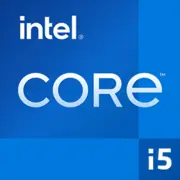Intel Core i5-9600T

Intel Core i5-9600T: 予算システム向けプロセッサの包括的レビュー (2025)
2025年4月
1. 主要仕様: アーキテクチャとパフォーマンス
アーキテクチャとリファブリケーションプロセス
Intel Core i5-9600Tは、2019年に発売された第9世代Coffee Lakeプロセッサに属しています。14nmプロセスで製造されており、2025年には古くなったと見なされていますが、要求の少ないタスクには依然として有用です。チップは、ハイパースレッディングをサポートしない6つの物理コアを搭載し(6スレッド)、基本動作周波数は2.3GHz、最大ターボ周波数は3.9GHzです。
主な特徴
- 低い消費電力 (TDP 35W): コンパクトで静音のシステムに最適です。
- Intel UHD Graphics 630統合グラフィックス: HDMI/DisplayPortを介して4K@60Hzをサポートします。
- ビデオのハードウェアアクセラレーション(Quick Sync)をサポート: ストリーミングコンテンツのエンコーディング/デコーディングに便利です。
パフォーマンス
Geekbench 6のテスト(シングルコア: 1344、マルチコア: 4635)では、このプロセッサはオフィスの作業や軽いマルチタスクに十分なパワーを示しています。たとえば、20以上のタブを持つブラウザとPhotoshopでの並行作業を行っても、ラグは発生しません。しかし、3Dモデルのレンダリングや4Kビデオの処理には、その能力が不足します。
2. 互換性のあるマザーボード
ソケットとチップセット
プロセッサはLGA 1151ソケット(V2バージョン、300シリーズ)を使用します。適切なチップセットは以下の通りです:
- H310/B360/H370: オーバークロック非対応の予算向けマザーボード(例: ASUS Prime B360M-A, $80–100)。
- Z390: エンスージアスト向け、メモリオーバークロックやより高速なSSDをサポートします(例: Gigabyte Z390 UD, $120–140)。
選択時の注意点
- マザーボードに第9世代プロセッサをサポートするBIOSが搭載されているか確認してください(出荷時またはアップデート後)。
- コンパクトなビルドにはMicro-ATXフォーマットのモデルが適しています(例: MSI H310M PRO-VDH Plus, $70)。
3. メモリのサポート
i5-9600TはDDR4-2666 MHz(最大128 GB)に対応しています。DDR5やそれ以上の周波数はサポートされていません。2025年現在、DDR4は予算システムにとって依然として有用ですが、そのアップグレードポテンシャルは限られています。
推奨
- 最適なオプション: 16 GB(2x8 GB)DDR4-2666(例: Crucial Ballistix, $45)。
- マルチメディアタスクには8 GBで十分ですが、ソフトウェアの要求の増加を考慮して節約しない方が良いでしょう。
4. 電源ユニット: 計算と推奨
TDP 35Wのプロセッサは強力な電源ユニットを必要としませんが、他のコンポーネントを考慮することが重要です:
- ディスクリートGPUなしのシステム: 300Wで十分です(例: be quiet! Pure Power 11 300W, $40)。
- NVIDIA GTX 1660レベルのGPUを使用する場合: 450–500W(EVGA 450 BR, $50)。
アドバイス
安価なノンネームの電源ユニットを購入しないでください: 効率と安定性で失敗する可能性があります。
5. メリットとデメリット
メリット
- エネルギー効率: ミニPCやパッシブ冷却システムに適しています。
- オフィス、学習、メディアセンターに対する十分なパフォーマンス。
- 低価格: $150–180(新製品、2025年)。
デメリット
- ハイパースレッディングなし: Ryzen 5 3600に対してマルチスレッドタスクで不利。
- 古い技術: PCIe 4.0、DDR5、USB 3.2 Gen 2x2の欠如。
6. 使用シナリオ
- オフィスと学習: ドキュメント作成、Zoom会議、ウェブサーフィン。
- マルチメディア: ストリーミング4Kビデオ(Netflix、YouTube)、Ableton Liveでの音楽プロジェクト。
- ゲーム: ディスクリートGPUがある場合のみ。CS2やDota 2(中設定)では60–90 FPSを表示します。
実際の例
ユーザーがi5-9600T + NVIDIA GTX 1650でHTPCを構築し、システムは150W未満で消費し、4K HDRを再生し、インディーゲームを静音でプレイします。
7. 競合との比較
- AMD Ryzen 5 3600 (6/12, TDP 65W): マルチスレッドパフォーマンスが30%高い(Geekbench 6 マルチコア: ~6000)が、価格は高いです($180–200)。
- Intel Core i3-12100 (4/8, TDP 60W): シングルスレッドタスクで優れている(Geekbench 6 シングルコア: 1800+)が、新しいプラットフォーム(LGA 1700)が必要です。
結論
i5-9600Tはエネルギー効率と価格でのみ優位。2025年のほとんどのタスクには、より現代的なモデルを選ぶ方が良いでしょう。
8. ビルドに関する実用的なアドバイス
- 冷却: 標準クーラーまたは低プロファイルソリューション(例: Noctua NH-L9i, $45)が十分です。
- ストレージ: OSの迅速な起動のためにSSD(例: Kingston A2000 500GB, $40)を必ず使用してください。
- アップグレード: DDR4や古いプラットフォームには投資しないでください—これは行き止まりの道です。
9. 最終的な結論: i5-9600Tは誰に適しているか?
このプロセッサを選ぶのは、もし以下の条件がある場合です:
- オフィス、学習、メディアセンター用の予算PCが必要です。
- 低いエネルギー依存性が重要です(たとえば、家庭用サーバー用)。
- $150以下のセールで購入できる機会がある。
なぜ選ばないのか?
ゲーム、ビデオ編集、AI作業には、Ryzen 5 7600やCore i5-13400の方が、DDR5およびPCIe 5.0をサポートするために追加料金を払う方が良いでしょう。
要約
2025年のIntel Core i5-9600Tは、静音性、効率性、ミニマリズムを重視する人にとってニッチな解決策です。しかし、将来的なアップグレードのためには、より現代的なプラットフォームを検討する価値があります。
基本
CPUの仕様
メモリ仕様
GPUの仕様
その他
ベンチマーク
他のCPUとの比較
ソーシャルメディアで共有する
または当サイトへのリンクを追加
<a href="https://cputronic.com/ja/cpu/intel-core-i5-9600t" target="_blank">Intel Core i5-9600T</a>